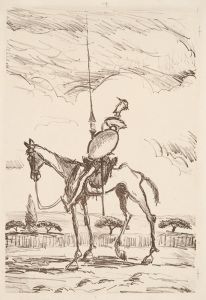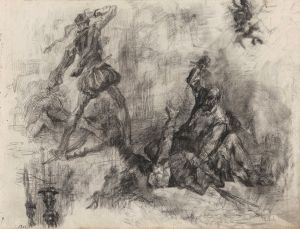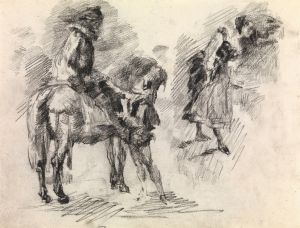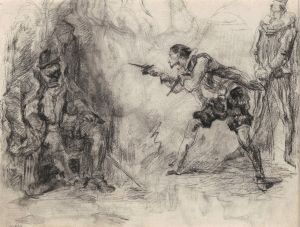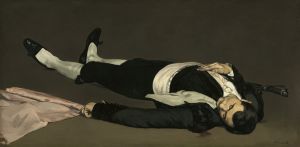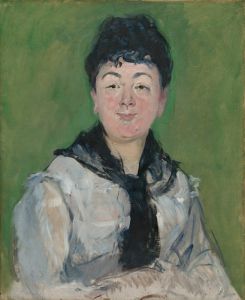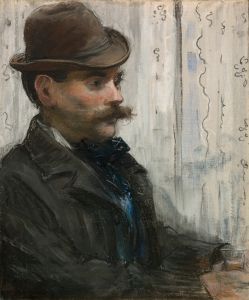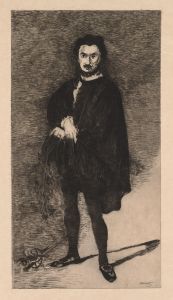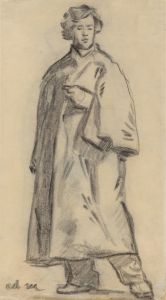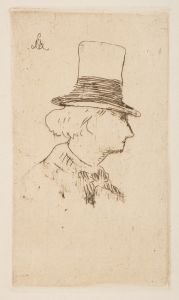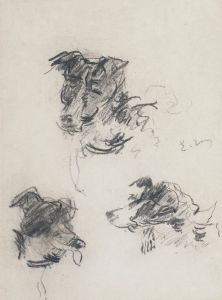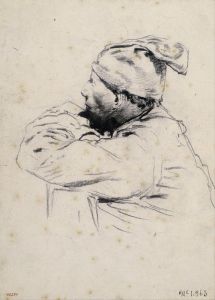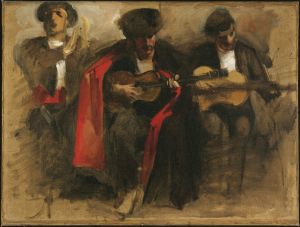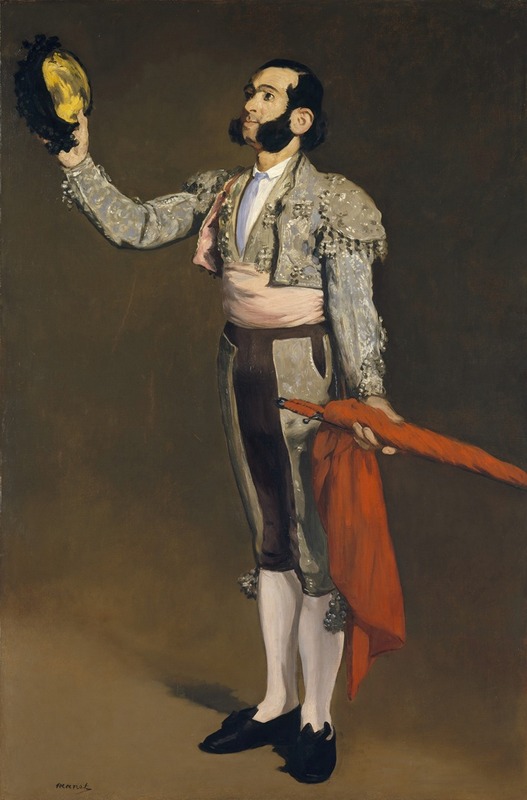
A Matador
A hand-painted replica of Édouard Manet’s masterpiece A Matador, meticulously crafted by professional artists to capture the true essence of the original. Each piece is created with museum-quality canvas and rare mineral pigments, carefully painted by experienced artists with delicate brushstrokes and rich, layered colors to perfectly recreate the texture of the original artwork. Unlike machine-printed reproductions, this hand-painted version brings the painting to life, infused with the artist’s emotions and skill in every stroke. Whether for personal collection or home decoration, it instantly elevates the artistic atmosphere of any space.
Édouard Manet, a pivotal figure in the transition from Realism to Impressionism, painted "A Matador" in 1866. This artwork is part of Manet's exploration of Spanish themes, which he found captivating and exotic. The painting reflects his admiration for Spanish culture, particularly the bullfighting tradition, which was a popular subject among artists of the time.
Manet's interest in Spanish subjects was influenced by his admiration for Spanish painters like Diego Velázquez and Francisco Goya. In "A Matador," Manet captures the essence of the bullfighter, a figure that embodies both grace and danger. The painting depicts a matador in his traditional costume, known as a "traje de luces," which translates to "suit of lights." This elaborate attire, characterized by its intricate embroidery and vibrant colors, is designed to dazzle both the bull and the audience.
The composition of "A Matador" is notable for its simplicity and focus on the figure of the matador. Manet employs a limited color palette, dominated by dark tones, which serves to highlight the matador's costume and the intensity of his expression. The background is minimally detailed, drawing the viewer's attention to the central figure. This approach is typical of Manet's style, where he often emphasized the subject by reducing extraneous details.
Manet's brushwork in "A Matador" is loose and expressive, a technique that would later be associated with the Impressionists. However, unlike the Impressionists, who often painted en plein air to capture natural light and atmosphere, Manet's work retains a sense of studio composition. This blend of techniques underscores Manet's role as a bridge between traditional and modern art movements.
The painting reflects Manet's fascination with the theatricality and drama of bullfighting, a theme he explored in several works. His portrayal of the matador is both heroic and introspective, capturing the dual nature of the bullfighter as both a performer and a participant in a dangerous spectacle. This duality is a recurring theme in Manet's work, where he often depicted figures caught between public personas and private emotions.
"A Matador" is part of a broader series of works by Manet that explore Spanish themes, including "The Spanish Singer" and "Lola de Valence." These paintings were well-received in France, where there was a growing interest in Spanish culture during the 19th century. Manet's Spanish-themed works contributed to his reputation as an innovative artist who challenged conventional artistic norms.
Today, "A Matador" is recognized as an important work in Manet's oeuvre, illustrating his skill in capturing the essence of his subjects with both realism and emotional depth. The painting is held in a private collection, making it less accessible to the public than some of his other works. Nonetheless, it remains a significant example of Manet's exploration of cultural themes and his contribution to the development of modern art.





